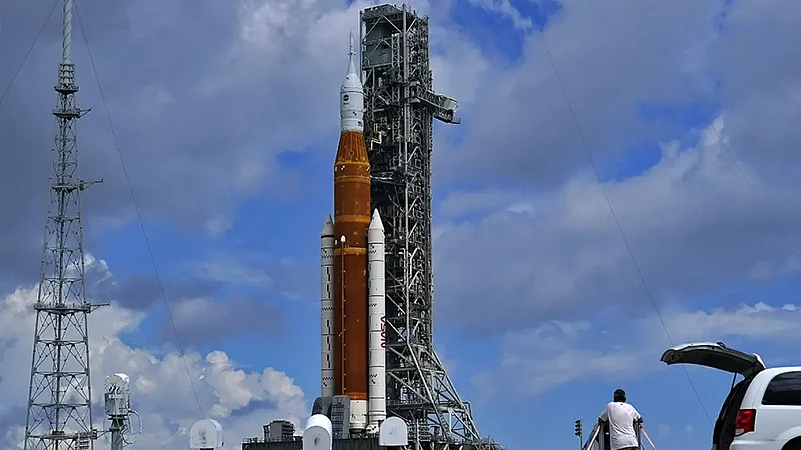NASA's Space Launch System (SLS) rocket test-run suffered fuel leaks on Wednesday. The rocket launch has been called off twice over leaks and other issues.
The SLS rocket is part of the Artemis I space program, which will deliver the Orion spacecraft into space. The spacecraft will then orbit the Moon and splash down on Earth after completing its 42-day journey.
The Artemis space program —composed of three missions— is the most ambitious space program ever. It aims to take humans to Moon for the first time in five decades and establish a base camp there, which would serve as the stepping stone to reach Mars.
Advertisement
In Wednesday's test, engineers eventually managed to get the leak down to acceptable levels. However, it has put the scheduled launch attempt on Tuesday under shadow. There was no immediate word on whether NASA would try for a liftoff on Tuesday given the sporadic nature of the hydrogen leaks, which have plagued the launch team for months.
"Leaving a lot of folks scratching their heads on this one," said Launch Control's Derrol Nail.
What was the issue in Artemis rocket's test run?
The daylong demo had barely begun when hazardous hydrogen fuel began leaking at the same place and same time as before, despite new seals and other repairs. Engineers halted the flow and warmed the lines in hopes of plugging the leak, and proceeded with the test. But the leak persisted before dropping to acceptable levels. Hours later, another leak cropped up elsewhere.
Advertisement
Nail said all test objectives were met. But managers need to review the results before determining whether the 98-metre rocket is ready for its first test flight.
Hydrogen leaks spoiled the first two launch attempts, as well as earlier countdown tests. So much hydrogen escaped during the countdown earlier this month that it exceeded NASA's limit by more than double. Wednesday's leak almost got that big again.
After hours of fits and starts, NASA finally managed to load nearly 4 million litres of fuel into the rocket. It was unclear whether the earlier gusher would nix a Tuesday launch attempt. In a separate matter, NASA still needs the U.S. Space Force to extend the certification of on-board batteries that are part of the flight safety system.
What prevented previous launch attempts?
Both of the previous launch attempts were called off after fuel leaks.
On 29 August, the first launch was called off after engine malfunction and fuel leaks. First, there was a leakage during the fuelling of the rocket that had delayed its launch. After it was repaired, there was an issue in one of the engines.
The Verge reported that "NASA scientists determined that engine number three [of the rocket] could not reach the appropriate temperature range to allow for a launch" and this led to the postponement. The engines need to be reach a very cold temperature to process the super-cold liquid fuel used in the rocket.
Advertisement
"The problem was traced to the connection where the hydrogen was being pumped into the vehicle. Controllers tried a number of fixes, including allowing the hardware to warm up for short periods, hoping this might reset the seal. But without success," reported the BBC.
The repairs carried out after fuel leaks
After the September 3 launch delay, NASA replaced two seals in the leaky line. One seal had a tiny indentation; it measured a mere one-hundredth of an inch.
"Now that doesn't sound like a lot, but again we're dealing with hydrogen," the smallest element on the periodic table, said mission manager Mike Sarafin.
Advertisement
NASA also altered the fuelling process, easing slowly into the loading of the super-cold liquid hydrogen and oxygen. After Wednesday's big leak appeared, the launch team moved even more slowly to subject the plumbing to even less stress.
What is the Artemis program?
The Artemis space program has three parts — Artemis I, Artemis II, Artemis III.
Artemis I would take human models in space which would orbit the Moon. It will pave the groundwork for Artemis II. Models are being sent first to study the effect of the unprecdented space journey on human bodies.
Artemis II would take humans into space. It will repeat Artemis I's journey but with humans instead of models. It would script history by taking humanity to farthest point yet in space.
Advertisement
Artemis III would land humans on Moon, taking humans to the Moon for the first time in five decades. It will also script history by landing first woman and first person of colour on the Moon. All persons to have been to Moon so far have been White men.
However, the success of the program rests on the success of the Artemis I and the launch of the SLS rocket.
(With AP inputs)




















